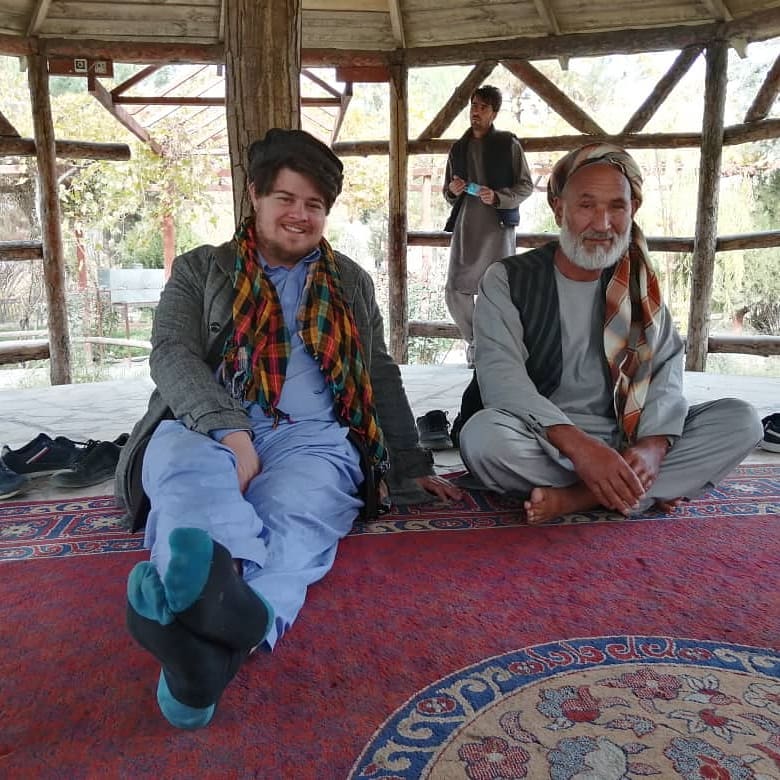Nestled on the side of the small village of Kholm (also known as Tashkorghan), next to the bustling main road between Kabul and Mazar-i-Sharif, is the famous Bagh e Jahan Nama, also known as the King’s Hunting Lodge. Located in northern Afghanistan, this 19 th century palace is a relic of a bygone era, whispering tales of emirs, conquests, and a vibrant past, that calls to adventurers with a thirst for history and a love for the road less travelled.
History of Bagh e Jahan Nama
Built between 1890 and 1892, as a summer palace for Amir Abdul Rahman, the Emir who unified Afghanistan and signed the historic Durand Line with the British. The Bagh e Jahan Nama Palace was originally constructed as a royal residence, designed to showcase the grandeur of Amir Abdur Rahman Khan’s rule. Its location, strategically positioned where the highway enters the northern plains, made it a prominent landmark for travellers and locals alike. The location of the palace also served as a retreat from Kabul’s sweltering heat. This architectural marvel, once a vibrant hub of power, fell into disrepair after the Emir’s death, battered by earthquakes and the Soviet invasion in the 1970s. During its heyday, Kholm was a key market town, even once serving as the capital of Kunduz province. Its significance waned as nearby Mazar-i-Sharif and Kunduz grew, but the lodge remains a testament to its former glory.
In the 1970s, during the presidency of Mohammed Daoud Khan, large amounts of money were spent in order to restore the palace. The plan was to turn the Kings hunting lodge into Afghanistan’s first ethnographic museum. These plans were put on the back burner by a devastating earthquake in 1976, which caused severe structural damage. As if things couldn’t get worse, the subsequent invasion by the Soviet Union in 1979 further altered the palace’s fate. Soviet soldiers occupied the site for the duration of the conflict, using it as a military base. The once beautiful gardens were marred by army tanks, and parts of the grounds were concreted over to accommodate military vehicles, leaving the estate in ruins.
The years of conflict and civil war that followed, particularly during the 1990s, exacerbated the palace’s deterioration. Neglect and warfare left both the building and its gardens in a state of disrepair, stripping away much of its former glory. The Bagh e Jahan Nama Palace, once a symbol of royal prestige, became a casualty of Afghanistan’s turbulent modern history. Today, slow community restoration projects aim to preserve this piece of Afghan heritage.
Where is Bagh e Jahan Nama located?
Kholm lies in Balkh Province, roughly 60 kilometres southwest of Mazar-i-Sharif, along the highway to Kabul. The King’s Hunting Lodge stands proudly on the town’s edge, its crumbling yet majestic walls framed by the stark beauty of northern Afghanistan’s plains and distant mountains. At about 1,200 meters above sea level, the air is crisp, and the landscape feels raw and untamed. The palace’s imposing walls, the rusted Soviet tanks nearby, and overgrown gardens create an eerie yet captivating atmosphere, like stepping into a forgotten kingdom.
How to get to Bagh e Jahan Nama?
Getting to the King’s Hunting Lodge is an adventure in itself. Starting from Mazar-i-Sharif, a bustling city known for its Blue Mosque, you can take a shared taxi along the Kabul-Mazar highway, a roughly two-hour drive through dusty plains and rolling hills. The road is in good condition but there are a couple of check points along the way. For those coming from Kabul, it is a 8-10 hour drive depending on traffic conditions. Along the way you will also pass the famous Tahkt e Rostam in Samangan.
It's much more comfortable and most importantly, much safer, to hire a private driver or join a tour when travelling to areas in rural Afghanistan.
Current Use and the Modern Experience
Today, Bagh e Jahan Nama, or the King’s Hunting Lodge, is not a formal tourist site but a hauntingly beautiful ruin. Its green gardens, once home to a grand fountain, are slightly overgrown. It is unlikely you will be alone as there are usually 1 or 2 Taliban soldiers roaming the grounds or sleeping in the palace. Local efforts to restore the palace are ongoing, but progress is slow, giving it an authentic, untouched feel.
In one back room there are still remnants of the Soviet presence which various murals, fading but visible. Kholm itself is a quiet provincial town, offering a glimpse into rural Afghan life – think bustling bazaars and friendly locals curious about visitors.
Tips for visiting Bagh e Jahan Nama
The best time of year to visit is spring or autumn. During this time the weather is mild, compared with the extremely hot summers and extremely cold winters. Make sure you take cash with you as there are no ATM machines or EFTPOS readers in rural Afghanistan. Make sure you respect local customs, dress modestly, and consider hiring a guide for deeper insights and smoother access. Security in Kholm and Mazar-i-Sharif is relatively stable, but make sure to get in touch for the most recent developments.


